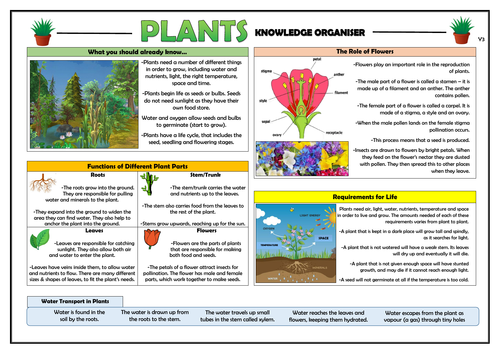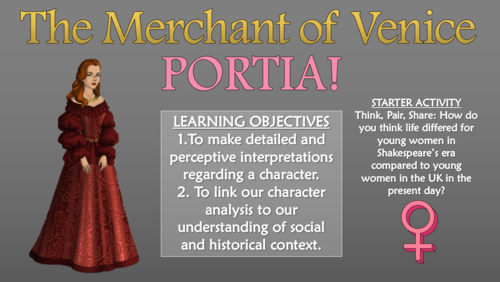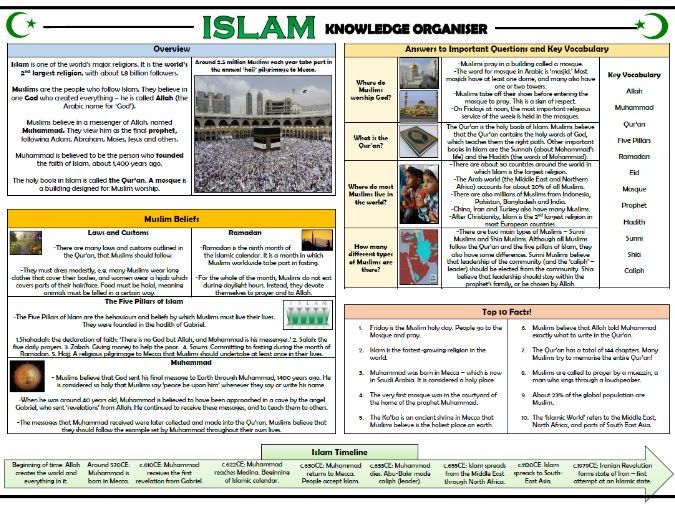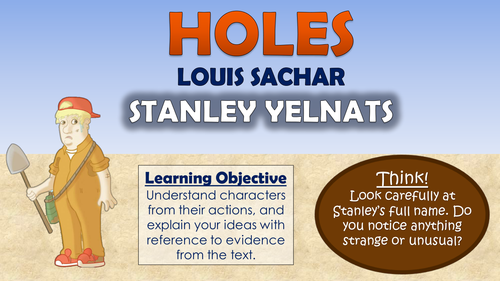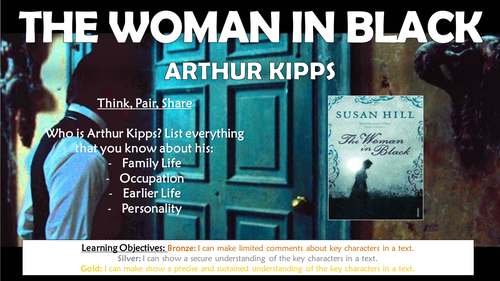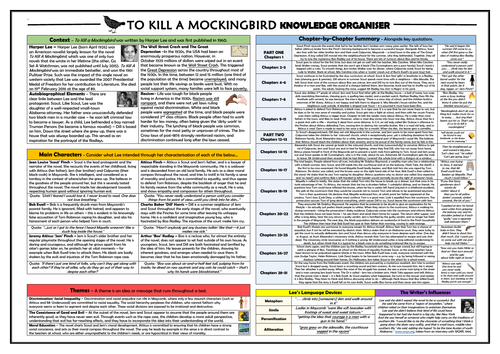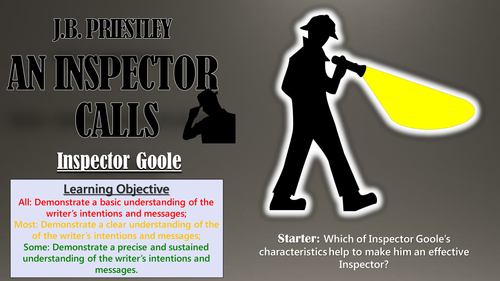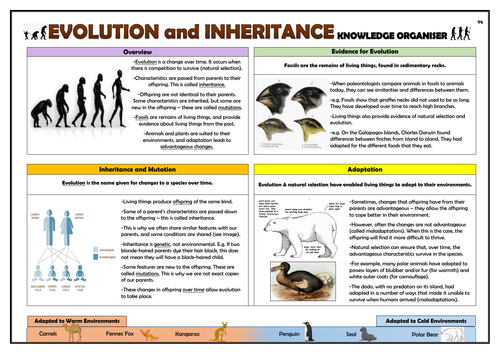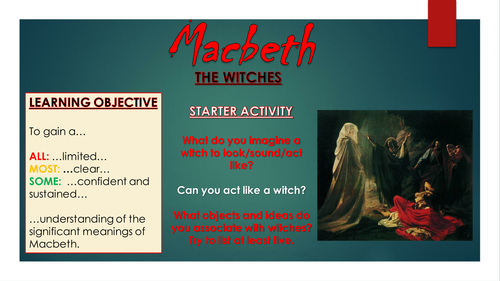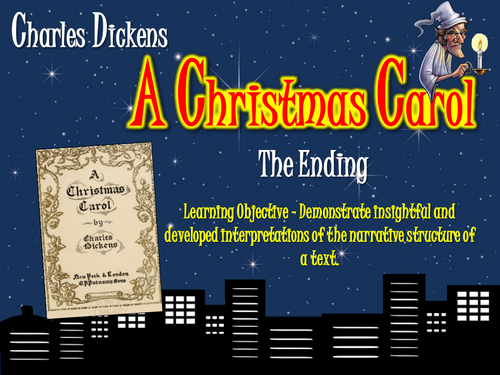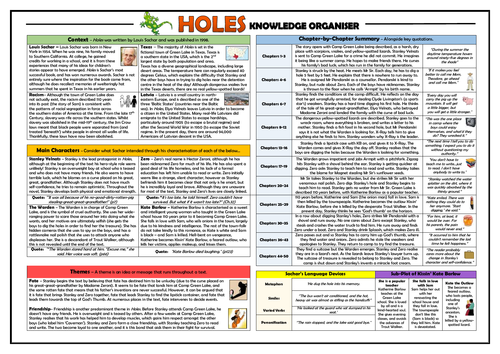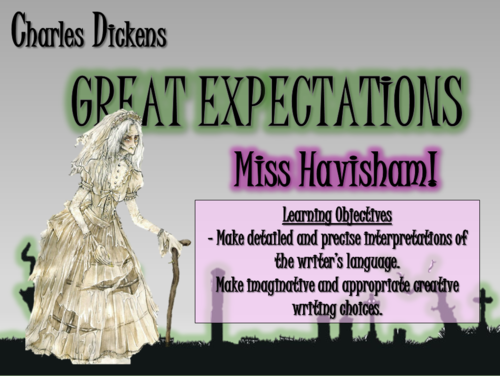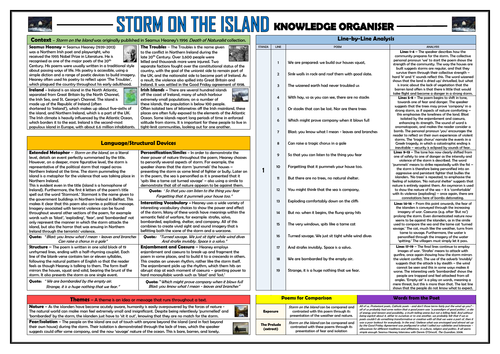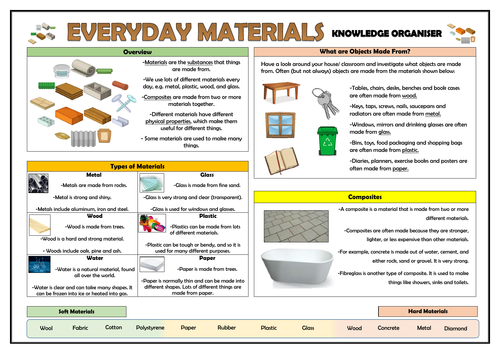
3k+Uploads
1858k+Views
2206k+Downloads
All resources

Frankenstein: The Portrayal of Women!
This engaging and informative lesson aims to improve students’ understanding of the portrayal of women in Mary Shelley’s Frankenstein. The lesson places a particular focus upon the perceived role and characteristics of women in the late 1700s, and compares this to the manner in which they are presented in the text. By the end of the lesson, students demonstrate an ability to argue whether they think Shelley’s portrayal of women challenges or recycles existing ideas of women living at the time.
The lesson follows a step-by-step learning journey, in which children learn through:
- Understanding the social and historical context of life for women in the late 1700s;'
- Making links between contextual understanding and what is noted from the text;
- Reading and understanding key extracts from chapters 8, 22, and 23 - extracts that provide exposure to the female characters in the text;
- Inferring, and interpreting the key events of the extracts, and considering the impression that is given of women by Shelley;
- Arguing whether they feel that Shelley recycles or challenges the role of women at the time, using a purpose-made essay template;
- Peer assessing each other's learning attempts.
Included is:
- Whole lesson PowerPoint - colourful and substantial; (including an animated Frankenstein's monster to guide them through the lesson);
- Inferring and interpreting worksheet (and a teacher answer sheet);
- Extracts from Chapters 8, 22, and 23;
- The role of women worksheet;
- Analysis template with success criteria for creating well-structured responses;
- Comprehensive lesson plan.
There are also opportunities for group learning, peer assessment, and whole class discussion. This was originally taught to middle-ability year 9/10 groups, but can easily be differentiated for groups of different ages and abilities.
All images are licensed for commercial use, and image rights are listed on the last page of the presentation.

Year 3 Plants Knowledge Organiser!
This clear, detailed and visually-appealing resource offers a complete reference point for Year 3 children, teachers and parents covering knowledge relating to ‘Plants’, as a part of their science learning. It contains comprehensive sections on:
What you should already know (from earlier learning);
Functions of Plant Parts;
The Role of Flowers (including pollination);
Plant Requirements for Life;
Water Transport in Plants;
Key Vocabulary.
The content is fully aligned with the NC expectations for Year 3 children relating to ‘Plants’:
-identify and describe the functions of different parts of flowering plants: roots,
stem/trunk, leaves and flowers
-explore the requirements of plants for life and growth (air, light, water, nutrients from
soil, and room to grow) and how they vary from plant to plant
-investigate the way in which water is transported within plants
-explore the part that flowers play in the life cycle of flowering plants, including
pollination, seed formation and seed dispersal.
The resource is designed to be printed onto A3, and is provided as both a PDF and a Word version (so that you can edit if you want to). All images used are licensed for commercial use and are cited on a separate document (included).

The Merchant of Venice - Portia!
This engaging and informative lesson enables students to make clear, detailed and well-informed interpretations of Portia in Shakespeare’s ‘The Merchant of Venice.’ In particular, students develop their contextual understanding of the role of women in Shakespeare’s time, make precise interpretations about her character using evidence from the play, and link their understanding to their knowledge of social and historical context.
The lesson follows a step-by-step learning journey, in which children learn through:
Knowledge harvesting their understanding of the role of women in Shakespeare’s era;
Researching and sharing multiple aspects of life for women in Shakespeare’s era;
Reading selected quotations from the play and interpreting what these reveal about Portia’s character;
Linking their knowledge of Portia’s character to their understanding of historical context;
Peer assessing each others learning attempts;
Included is:
Whole lesson PowerPoint - colourful and comprehensive;
Researching context worksheet;
Essay template
Comprehensive lesson plan.
Resources are provided in PDF (to maintain formatting), Word (so that they are easily editable) and also in zipfiles.
The lesson contains opportunities for group learning, speaking and listening, peer assessment, and whole class discussion. I originally used these resources with year 10 and 11 classes, however colleagues have used them for between year 9 and year 13 with some adaptations.
All images are licensed for commercial use, and image rights are listed on the last page of the presentation.

Islam Knowledge Organiser!
This detailed and visually-appealing resource offers a complete reference point for students learning about/ revising their understanding of Islam. It contains comprehensive sections under the following headings:
-Islam Overview;
-Islamic Beliefs;
-Islam Timeline;
-Key Vocabulary;
-Top Ten Facts;
-Answers to the Important Questions.
Key words and ideas are underlined for easy reference. The resource is designed to be printed onto A3, and is provided as both a PDF and a Word version (so that you can edit if you want to).

Holes - Stanley Yelnats!
This engaging and informative lesson helps students to understand the introduction and development of the lead protagonist in Louis Sachar’s 'Holes' - Stanley Yelnats. Students explore Stanley’s character traits at the start of the story, using extracts from the text, before tracking his changing behaviour as the novel progresses.
The lesson follows a step-by-step learning journey, in which children learn through:
- Reading and understanding the selected extracts to determine the key traits of Stanley's character at different points in the text;
- Noticing trends in Stanley's character throughout the text, observing how he develops from his introduction in the text to later on in the story;
- Using textual evidence to back up ideas about Stanley;
- Creating two diary entries from the viewpoint of Stanley, accounting for his changes over time;
- Peer assessing each other's learning attempts;
Included is:
- Whole lesson PowerPoint - colourful and comprehensive;
- Cards for the card-sorting activity
- Selected extract- Chapter 4;
- Development of Stanley chart (Word and PDF)
- Comprehensive lesson plan.
There are also opportunities for group learning, peer assessment, and whole class discussion. I originally used these resources with year 7 and 8 classes, however colleagues have used them for between years 4 and 9 with minimal adaptations.
All images are licensed for commercial use, and image rights are listed on the last page of the presentation.

The Woman in Black: Arthur Kipps!
This engaging and informative lesson enables students to make precise and sustained interpretations regarding the portrayal of Arthur Kipps throughout Susan Hill’s The Woman in Black. In particular, students consider how Kipps is initially presented, and how his character is developed throughout the text.
The lesson follows a step-by-step learning journey, in which children learn through:
- Reading and understanding how Arthur's character is introduced to the reader;
- Understanding and comprehending the different events that Arthur experiences;
- Considering how these different events shape and alter Arthur's emotions and personality;
- Analysing how Hill presents and develops Arthur's character throughout the text;
- Peer assessing each other's learning attempts.
Included is:
- Whole lesson PowerPoint - colourful and comprehensive;
- Selected extracts from 'The Woman in Black'
- Arthur Kipps stress graph;
- Analysis template with success criteria for creating well-structured responses;
- Comprehensive lesson plan.
There are also opportunities for group learning, peer assessment, and whole class discussion. This was originally taught to mixed ability year 10 groups, but can easily be differentiated for groups of different ages and abilities.
All images are licensed for commercial use, and image rights are listed on the last page of the presentation.

To Kill a Mockingbird Knowledge Organiser/ Revision Mat!
This detailed and visually-appealing resource offers a complete reference point for students learning or revising Harper Lee’s ‘To Kill a Mockingbird.’ It contains comprehensive sections on:
Context;
Chapter by Chapter Summary (with quotes);
Main Characters;
Themes;
Lee’s Language Devices;
Influences on the Writer.
Key words and ideas are underlined for easy reference. The resource is designed to be printed onto A3, and is provided as both a PDF and a Word version (so that you can edit if you want to). All images used are licensed for commercial use and are cited on a separate document (included).

An Inspector Calls: Inspector Goole
This interesting and engaging lesson enables students to build their understanding of Inspector Goole, one of the chief protagonists in ‘An Inspector Calls.’ In particular, students understand the Inspector’s main characteristics and quotations. They also contemplate whether they feel the Inspector presents the voice and key messages of Priestley himself.
The lesson follows a clear, logical, bite-size learning journey, which guides students towards differentiated learning objectives. Over the course of this journey, they become able to:
- Recall and understand the key features of The Inspector's character profile;
- Link The Inspector to Priestley's key messages and the context of the play;
- Piece together the Eva Smith case from the viewpoint of The Inspector;
- Read and understand the final section of the play;
- Analyse the character further in response to key quotations;
- Argue the extent to which the Inspector presents the views of Priestley himself;
- Peer/self-assess learning attempts.
This resource pack includes:
- A visually engaging whole-lesson PowerPoint presentation;
- A clear and interesting worksheet on interpreting The Inspector's character;
- Extract from Act 3 of the play for students to read and interpret;
- Inspector's notepad to piece together the Eva Smith case;
- A scaffolded template for students to complete the main analysis task;
- A detailed lesson plan, complete with what the teacher and students should aim to achieve at each stage of the lesson.
All images are licensed for commercial use, and are cited on the final slide of the PowerPoint.

Judaism Knowledge Organiser!
This detailed and visually-appealing resource offers a complete reference point for students learning about/ revising their understanding of Judaism. It contains comprehensive sections under the following headings:
-Judaism Overview;
-Jewish Beliefs;
-Judaism Timeline;
-Key Vocabulary;
-Top Ten Facts;
-Answers to the Important Questions.
Key words and ideas are underlined for easy reference. The resource is designed to be printed onto A3, and is provided as both a PDF and a Word version (so that you can edit if you want to).

To Kill a Mockingbird - Scout's Development!
This engaging and informative lesson enables students to make clear, detailed and well-informed interpretations of Scout Finch’s development as a character throughout To Kill a Mockingbird. In particular, students develop their background understanding of how her character is introduced, before plotting her development against the different stages of protagonists in Bildungsroman novels.
The lesson follows a step-by-step learning journey, in which children learn through:
Taking part in a fun quiz in order to gain/recap knowledge about Scout Finch’s background information (e.g. family history, family members, etc.);
Reading selected extracts from the text and answering comprehension questions about Scout’s introduction at the start of the novel;
Understanding the different stages of development in the Bildungsroman genre, and plotting Scout’s development against this;
Understanding Lee’s intentions/messages in presenting Scout in the way that she did;
Using knowledge of protagonist development and structure in order to create their own Bildungsroman storyboard templates;
Peer assessing each other’s learning attempts.
Included is:
Whole lesson PowerPoint - colourful and comprehensive;
Interesting Scout Finch development worksheet;
Selected extract (from chapter 2);
Storyboard template
Comprehensive lesson plan.
There are also opportunities for group learning, speaking and listening, peer assessment, and whole class discussion. I originally used these resources with year 10 and 11 classes, however colleagues have used them for between year 8 and year 13 with some adaptations.
All images are licensed for commercial use, and image rights are listed on the last page of the presentation.

Year 6 Evolution and Inheritance Knowledge Organiser!
This clear, detailed and visually-appealing resource offers a complete reference point for Year 6 children, teachers and parents covering knowledge relating to ‘Evolution and Inheritance’, as a part of their science learning. It contains comprehensive sections on:
Overview;
Inheritance and Mutation;
Evidence of Evolution;
Adaptation;
Animal Adaptations;
Key Vocabulary (underlined).
The content is fully aligned with the NC expectations for Year 6 children relating to ‘Evolution and Inheritance:’
-Recognise that living things have changed over time and that fossils provide
information about living things that inhabited the Earth millions of years ago;
-Recognise that living things produce offspring of the same kind, but normally offspring vary and are not identical to their parents;
-Identify how animals and plants are adapted to suit their environment in different
ways and that adaptation may lead to evolution.
The resource is designed to be printed onto A3, and is provided as both a PDF and a Word version (so that you can edit if you want to). All images used are licensed for commercial use and are cited on a separate document (included).

Macbeth: The Witches
This engaging and informative lesson enhances students' skills in understanding the significant meanings in William Shakespeare's Macbeth, and in particular the influence of the deceitful and mysterious weird sisters. Students gain an understanding of some of the attitudes towards witches in Shakespeare's times, and attempt to link this knowledge to the events of the text. They also engage with Shakespeare's intentions in utilising dramatic elements to reveal the witches use of the supernatural and deceit.
The lesson follows a clear and logical learning journey, involving progressively more challenging tasks in which students:
- Portray their understanding of witches and witchcraft;
- Learn more about witches in a historical context through a fun 'true or false' game;
- Define, identify, and understand dramatic irony;
- Read sections of Macbeth and complete tasks to demonstrate their understanding;
- Answer key questions about the witches that test their knowledge in relation to each of the English assessment outcomes;
- Evaluate a modelled example of an analytical paragraph in relation to the witches;
- Analyse the witches' characteristics in their own responses;
- Evaluate each others' analytical responses.
All images are cited on the final slide of the presentation, and are licensed for commercial use.

The Merchant of Venice - Shylock!
This engaging and informative lesson enables students to make clear, detailed and well-informed interpretations of Shylock from The Merchant of Venice. In particular, students develop their contextual understanding of how Jews were perceived in Shakespeare’s time, make precise interpretations about his character using evidence from the play and link their findings to their understanding of social and historical context.
The lesson follows a step-by-step learning journey, in which children learn through:
Knowledge harvesting their understanding of the Judaism and the treatment of Jews throughout history;
Researching and sharing how Jews were perceived in Shakespeare’s era;
Reading selected quotations from the play and interpreting what these reveal about Shylock’s character;
Plotting Shylock’s development over the course of the play;
Linking their knowledge of Shylock’s character to their understanding of historical context;
Understanding Shakespeare’s intentions/messages in presenting Shylock in the manner that he did;
Peer assessing each other’s learning attempts;
Included is:
Whole lesson PowerPoint - colourful and comprehensive;
Shylock character development graph;
Jigsaw pieces for the group jigsaw activity;
Essay template
Comprehensive lesson plan.
There are also opportunities for group learning, speaking and listening, peer assessment, and whole class discussion. I originally used these resources with year 10 and 11 classes, however colleagues have used them for between year 8 and year 13 with some adaptations.
All images are licensed for commercial use, and image rights are listed on the last page of the presentation.

A Christmas Carol: The Ending!
This engaging and informative lesson enables students to make insightful and developed interpretations regarding the ending of Dickens’ ‘A Christmas Carol.’ In particular, they explore how the ending is in keeping with the traditional features of resolutions stage in the narrative structure model.
The lesson follows a step-by-step learning journey, in which children learn through:
- Clarifying the events leading up to the end of the novel;
- Reading and comprehending the events of Stave 5 - the end of the novel;
- Understanding the key stages of Narrative Structure and applying 'A Christmas Carol' to this model;
- Analysing Dickens' ending in relation to the key features of traditional resolutions;
- Peer assessing each other's learning attempts.
Included is:
- Whole lesson PowerPoint - colourful and comprehensive;
- Extract - Stave 5
- Narrative Structure Template;
- Analysis template with success criteria for creating well-structured responses;
- Comprehensive lesson plan.
There are also opportunities for group learning, peer assessment, and whole class discussion. This was originally taught to mixed ability year 10 groups, but can easily be differentiated for groups of different ages and abilities.
All images are licensed for commercial use, and image rights are listed on the last page of the presentation.

Holes Knowledge Organiser/ Revision Mat!
This detailed and visually-appealing resource offers a complete reference point for students learning or revising Louis Sachar's 'Holes.' It contains comprehensive sections on:
- Context;
- Chapter by Chapter Summary (with quotes);
- Main Characters;
- Themes;
- Sachar's Language Devices;
- The Sub-Plot of Kissin' Kate Barlow.
Key words and ideas are underlined for easy reference. The resource is designed to be printed onto A3, and is provided as both a PDF and a Word version (so that you can edit if you want to). All images used are licensed for commercial use and are cited on a separate document (included).

The Great Fire of London Knowledge Organiser/ Revision Mat!
This clear, detailed and visually-appealing resource offers a complete reference point for students learning or revising knowledge relating to the The Great Fire of London. It contains comprehensive sections on:
The Great Fire of London Overview;
Map and description of the Affected Areas;
Key People;
The Great Fire of London Timeline;
Answers to the Important Questions;
Top Ten Facts.
The resource is designed to be printed onto A3, and is provided as both a PDF and a Word version (so that you can edit if you want to). All images used are licensed for commercial use and are cited on a separate document (included). It is most suitable for students in upper KS2 and KS3.

Great Expectations: Miss Havisham!
This engaging and informative lesson enables students to make detailed and precise interpretations of the language used by Charles Dickens in describing Miss Havisham in Great Expectations. In particular, students analyse the interesting vocabulary choices, similes, metaphors, and other language devices employed to depict Miss Havisham’s decayed appearance and surroundings, before utilising the techniques in a similar manner through their own vivid descriptions.
The lesson follows a step-by-step learning journey, in which children learn through:
- Defining and exemplifying each of the descriptive language devices;
- Reading extracts from 'Great Expectations' in which Miss Havisham is described, identifying the descriptive devices used;
- Precisely and in detail, analysing how Dickens uses each of the descriptive language devices for effect;
- Creating their own imaginative and appropriate descriptions of mysterious characters, using a wide range of descriptive language devices;
- Peer assessing each other's learning attempts.
Included is:
- Whole lesson PowerPoint - colourful and comprehensive;
- Extracts from Great Expectations;
- Cards for card-sorting activity;
- Analysis template with success criteria for creating well-structured responses;
- Blank character profile template;
- Model example character profile template;
- Writing to describe helpsheet;
- Comprehensive lesson plan.
All documents are attached as Word and PDF in case formatting differs on your computer.
There are also opportunities for group learning, peer assessment, and whole class discussion. This was originally taught to mixed ability year 10 groups, but can easily be differentiated for groups of different ages and abilities.
All images are licensed for commercial use, and image rights are listed on the last page of the presentation.

Storm on the Island Knowledge Organiser/ Revision Mat!
This detailed and visually-appealing resource offers a complete reference point for students learning or revising Seamus Heaney’s power and conflict poem 'Storm on the Island.’ It contains comprehensive sections on:
Context;
Line-by-Line Analysis;
Poetic Devices/ Language Devices;
Themes;
Form/Structure;
Poems for Comparison;
The Poet’s Influences.
Key words and ideas are underlined for easy reference. The resource is designed to be printed onto A3, and is provided as both a PDF and a Word version (so that you can edit if you want to). All images used are licensed for commercial use and are cited on a separate document (included).

Remains - Simon Armitage - Knowledge Organiser/ Revision Mat!
This detailed and visually-appealing resource offers a complete reference point for students learning or revising Simon Armitage’s power and conflict poem 'Remains.’ It contains comprehensive sections on:
Context;
Line-by-Line Analysis;
Poetic Devices/ Language Devices;
Themes;
Form/Structure;
Poems for Comparison;
The Poet’s Influences.
Key words and ideas are underlined for easy reference. The resource is designed to be printed onto A3, and is provided as both a PDF and a Word version (so that you can edit if you want to). All images used are licensed for commercial use and are cited on a separate document (included).

Year 1 Everyday Materials Knowledge Organiser!
This clear, detailed and visually-appealing resource offers a complete reference point for Year 1 children, teachers and parents covering knowledge relating to ‘Everyday Materials’, as a part of their science learning. It contains comprehensive sections on:
Overview;
Types of Materials;
What are Objects Made from?
Composites;
Soft/Hard Materials Continuum;
Key Vocabulary (underlined).
The content is fully aligned with the NC expectations for Year 1 children relating to ‘Everyday Materials:’
-distinguish between an object and the material from which it is made
-identify and name a variety of everyday materials, including wood, plastic, glass,
metal, water, and rock
-describe the simple physical properties of a variety of everyday materials
-compare and group together a variety of everyday materials on the basis of their
simple physical properties.
The resource is designed to be printed onto A3, and is provided as both a PDF and a Word version (so that you can edit if you want to). All images used are licensed for commercial use and are cited on a separate document (included).


